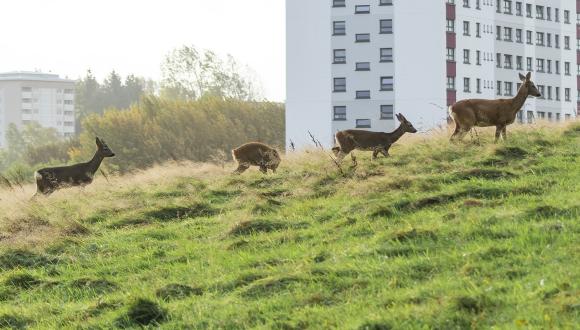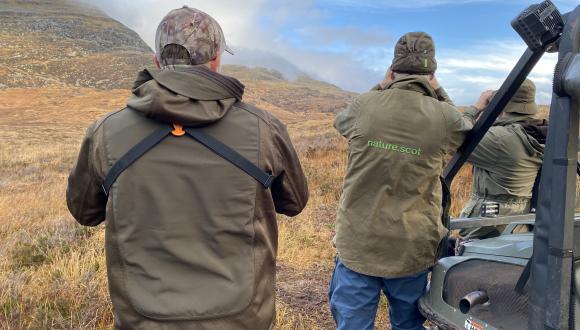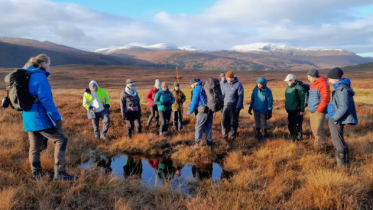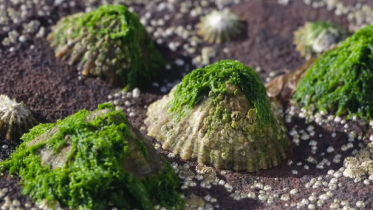Deer
Four species of deer are found in Scotland: red, roe, fallow and sika. Red and roe deer are native species.
Four species of deer are found in Scotland: red, roe, fallow and sika. Red and roe deer are native species. Today’s fallow deer are descendants of those introduced by the Normans in the 11th century. Sika deer became established in Scotland in the 1920s after being brought here from Asia.
Scotland’s majestic red deer is our largest wild land mammal and an encounter with this iconic species is unforgettable. Some of our most impressive wildlife spectacles involve red deer. In some parts of Scotland they are expanding their range, in particular spreading from the hills into lower-lying agricultural ground.
Striking and delicate, the roe deer is found throughout mainland Scotland. Roe deer have been expanding their range, particularly in central Scotland. They are increasingly seen in towns and cities, as they only need small amounts of woodland or scrub for cover.
Fallow and sika deer were introduced to Scotland through deliberate releases and escapes from country parks and now have well-established populations. Sika are widespread and abundant, whereas fallow deer are more restricted in both range and population size.
Wild deer are a huge asset to Scotland as:
- an important part of our rural economy and culture
- an integral part of Scotland’s biodiversity
- a source of healthy food and recreational opportunities
Red deer
Red deer are found in woodlands and on moorland, from the coast to the tops of mountains, where they graze on grasses, sedges, heathers and woody species. They occur across most of Scotland but are absent from the Northern Isles and other outlying islands and some parts of the Borders.
Woodland red deer are generally bigger and more productive than hill deer, as they have access to better quality foods and shelter. Hill deer may live in groups of hundreds, while woodland red deer prefer smaller group sizes. Male (stag) and female (hind) groups are usually separate other than during the ‘rut’, when stags fight for hinds with which to mate. This is when you may hear the roar of stags in our glens.
Roe deer
Roe deer are the smallest of our deer. They are widespread on the mainland, occurring right across the country, but are absent from the Western and Northern Isles and many of the islands off the west coast including Arran and Mull. Roe are normally seen in loose family groups or as single animals. Roe prefer woodlands or farmland with permanent cover, but they are increasingly found on open moorland and in urban and suburban areas. Primarily browsers, roe are selective and thrive best in woodland habitats which offer a variety of food including herbs, brambles, ivy, heather, bilberry and coniferous tree shoots.
From February through to mid-August, roe bucks (male deer) are territorial, and thus generally solitary but they may form small groups in winter. Roe does (female deer) are accompanied by kids for most of the year but will actively drive them out before the birth of their next young. Does usually give birth to one or two kids.
Fallow deer
Fallow deer were introduced by the Normans around a thousand years ago. They were prized as ornamental species and were protected in royal hunting forests for royal sport.
They have a patchy distribution in Scotland and, while absent from much of the Highlands, there are populations on some of the Hebridean islands. Fallow deer frequent mature, broadleaf woodland with a lot of undergrowth, open coniferous woodland and open agricultural land. They browse tree shoots and agricultural crops, bringing them into conflict with farmers and foresters. However, they cause few, if any, problems to our native deer species.
Sika
Sika are not native to the United Kingdom and were brought here from Asia around 1860. Sika are very closely related to native red deer and can hybridise with them to produce fertile off-spring. Generally, hybrids tend to be the result of sika males (stags) crossing with female red deer (hinds). Although first generation hybrids may be recognisable as having the appearance of both parents, subsequent crosses are difficult to assess.
Sika deer are now established in Scotland. However, in order to keep some native red deer populations free from sika genes, islands off the west coast of Scotland have been designated as red deer refugia. The spread of sika and the damage that they can cause to forestry and woodland will be minimised through management, particularly through the control of pioneering stags.
Deer impacts on habitats
Deer are iconic species with cultural significance in Scotland and they form an important part of our biodiversity. But their high numbers and lack of natural predators mean they are having a negative impact in our landscape.
The negative impacts of excessive deer numbers can be seen across Scotland, such as preventing new trees from growing, damaging existing woodland, overgrazing and trampling our peatlands.
At appropriate levels, deer can help benefit habitats, particularly in the uplands. For example, grazing by red deer can help to:
- maintain some plant communities
- create niches for seedling regeneration
- provide a source of dung and carrion used by other species
Deer management
Deer have no natural predators in Scotland, so populations must be managed to reduce the damage they cause, help prevent deer vehicle collisions and supply wild venison for consumption. Deer stalking in Scotland is thought to be worth more than £100 million annually to the economy.
Find out about managing deer.
Threats to deer
Both red and roe deer are thriving in Scotland. The greatest threat to them is from sika, which potentially could displace the smaller roe deer and which, through hybridisation, could gradually change the red deer’s genetic make-up, appearance, and behaviour as hybrids become more common.
We must also guard against the introduction of muntjac and Chinese water deer in Scotland, both already present as non-native species in England.
Protection of deer
Learn about deer and licensing.
Read our guidance on deer as a protected species.
Report a sighting
Find out how to submit records of mammal sightings to The Mammal Society.






